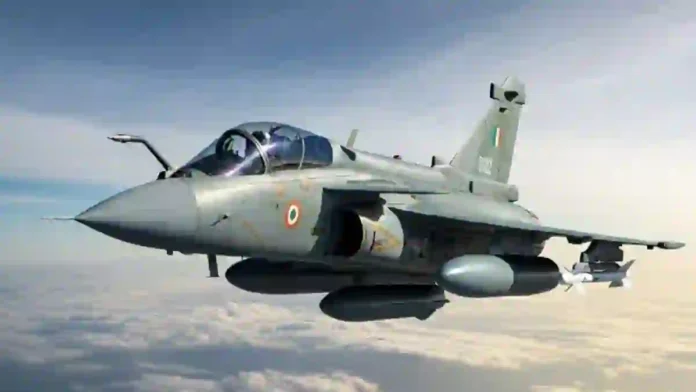India is preparing to acquire nearly 450 fighter jets in the coming years as part of a comprehensive plan to modernise and expand the Indian Air Force (IAF) amid growing geopolitical challenges, especially from neighbouring China and Pakistan.
The Indian Air Force currently has around 31 active combat squadrons, significantly below the desired strength of 42 squadrons. Each squadron typically comprises 18 to 20 aircraft, and the goal is to restore and even surpass the squadron strength required to maintain air supremacy along India’s sensitive northern and western borders.
Read- A Peek Into India’s Expanding Missile Arsenal
The plan for these acquisitions includes a mix of indigenous and foreign aircraft types:
Around 180 TEJAS MK-1A jets
Approximately 120 TEJAS MK-2 jets
About 60 Advanced Medium Combat Aircraft (AMCA), an indigenous stealth fighter under development.
Apart from the above, India is entering a pivotal phase in modernising its air combat capabilities by planning to acquire an additional 114 Rafale fighter jets from France—a move poised to transform the Indian Air Force’s (IAF) operational readiness and the future balance of air power in South Asia. This historic procurement, expected to be finalised via a direct government-to-government (G2G) agreement, marks a critical shift away from protracted global tenders under the long-delayed Multi-Role Fighter Aircraft (MRFA) program.
This ambitious acquisition plan is driven by multiple factors. India’s existing fleet includes many ageing aircraft such as MiG-21s, MiG-27s, Jaguars, and some early Mirage-2000s which are increasingly becoming obsolete.
Over the next 15 years, around 250 of these older jets are scheduled for retirement, which will further increase the demand to replenish the fleet. This has created a critical shortfall—estimated at nearly 200 fighter jets—which is consistent with the target figure of acquiring about 450 new fighter jets by 2040.
This number matches roughly the entire current fighter fleet strength of Pakistan’s Air Force, underscoring the scale of India’s modernisation and strategic needs.
Read- IAF Seeks 114 Rafale Jets In Direct Deal With France, Bypassing MRFA Tender
The acquisition strategy includes several approaches:
Interim procurement of two to three squadrons (approximately 40 to 60 aircraft) of fifth-generation fighter jets from foreign sources to fill immediate capability gaps while India’s indigenous Advanced Medium Combat Aircraft (AMCA) project matures.
Potential suppliers being discussed include the United States, offering the F-35, and Russia, proposing the Su-57. While no final decision has been made, these options are under active consideration due to their advanced stealth and combat features.
Development and production of 114 modern 4.5-plus generation fighters under the Multi-Role Fighter Aircraft (MRFA) program, which may involve government-to-government deals and “Make in India” collaboration with foreign partners to enable local manufacturing and technology transfer.
Indigenous programs such as the TEJAS Light Combat Aircraft (LCA) series (TEJAS MK-1A and TEJAS MK-2) and the AMCA are central to India’s long-term vision of self-reliance in defence aviation.
However, these programs face delays largely because of dependencies on foreign engines and advanced aerospace technologies. Production rates of indigenous jets remain slow, with about a dozen TEJAS jets expected per year in the near term.
Inclusion of unmanned aerial vehicles (UAVs) and autonomous combat drones to complement manned fighter jets and transition the IAF toward a more network-centric, future-proof combat force.
Financial constraints are a significant challenge for such a large-scale acquisition, requiring billions of dollars in investment. India’s defence procurement is balancing between urgent foreign purchases to fill capability gaps and fostering domestic aerospace manufacturing to build long-term strategic autonomy.
Strategically, restoring the IAF’s squadron strength and acquiring cutting-edge jets are critical for maintaining deterrence and a combat edge in the Indo-Pacific region, particularly given China’s advancing air capabilities, including stealth fighters and emerging sixth-generation prototypes.
India’s plan to acquire nearly 450 fighter jets in the coming years reflects a multi-layered approach combining foreign procurement of fifth-generation fighters, accelerated indigenous aircraft production, and the integration of advanced unmanned platforms.
This effort aims not only to restore squadron numbers but also to transform the Indian Air Force into a modern, robust, and technologically advanced air combat force capable of meeting future security challenges. The decisions made now will significantly shape India’s air combat strategy and defence posture for decades to come.
IDN (With Agency Inputs)
Agency




